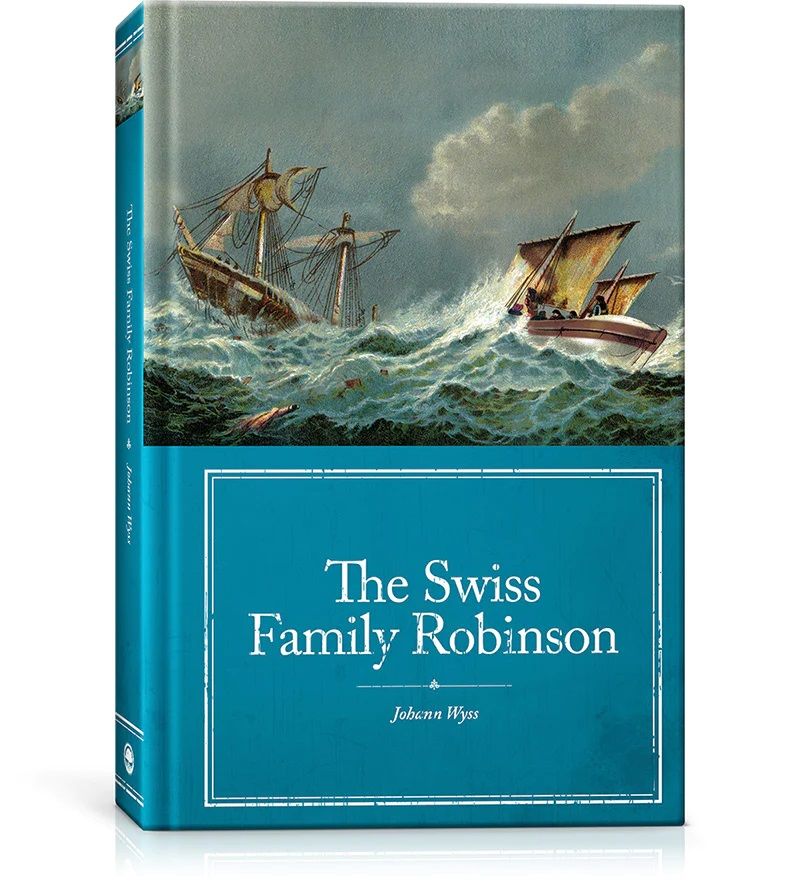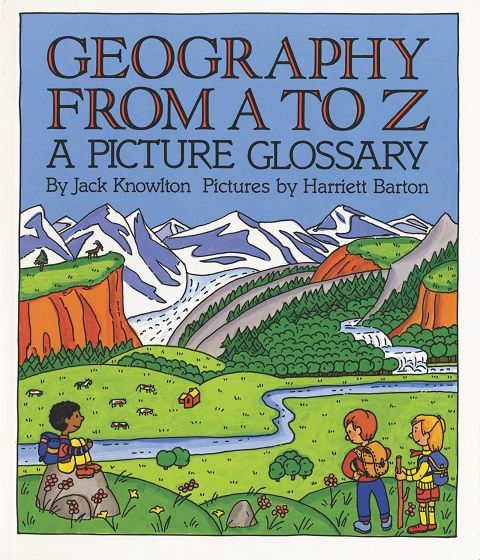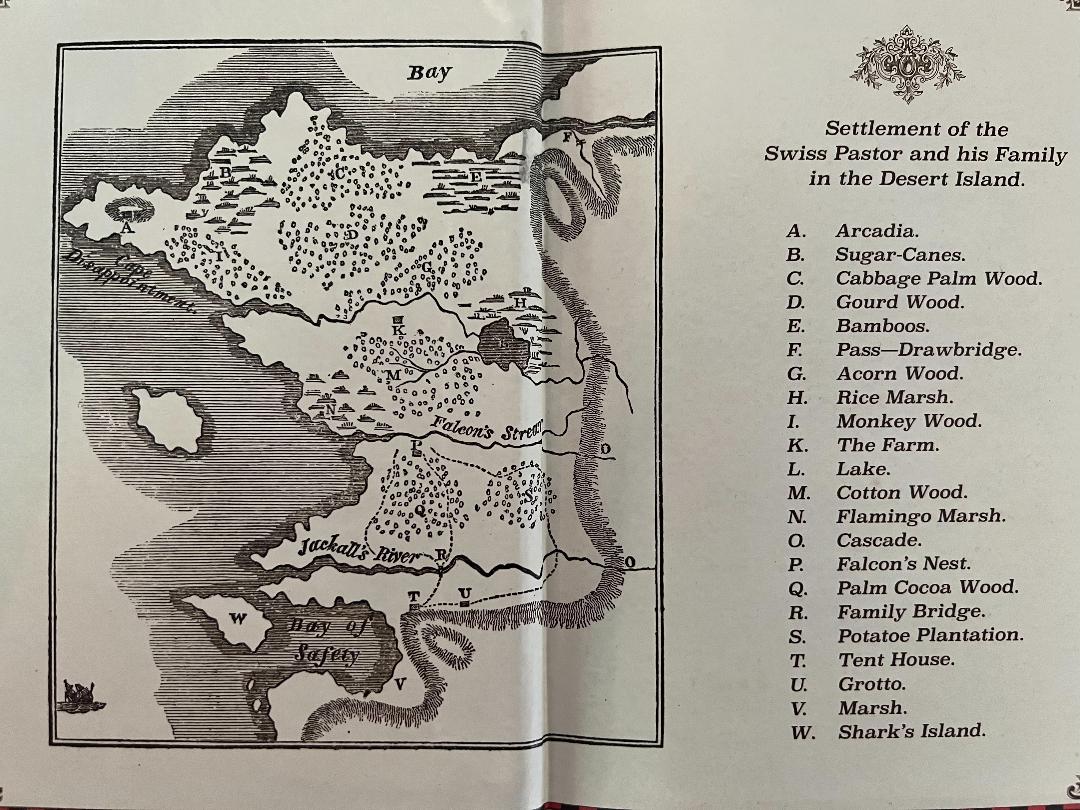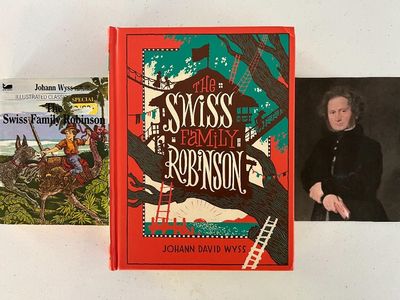Johann David Wyss is best known for authoring The Swiss Family Robinson, an iconic adventure story that children of all ages have long enjoyed, which is full of moral themes that parents appreciate. Join us as we master survival skills and create an island with a variety of geographical features.
Johann David Wyss (May 28, 1743 - January 11, 1818), a Swiss pastor, purposed to write didactic, quality literature that families could enjoy together. These stories feature families working together to overcome difficulties, children learning moral and life lessons from their father, and families acknowledging God's sovereignty, His goodness, and provision. Wyss, his wife, and four sons enjoyed many outdoor activities together, such as hunting, fishing, hiking, and studying nature.

In addition, the family spent much time reading and discussing stories full of adventure. After being inspired by such adventure found within the pages of Daniel DeFoe's Robinson Crusoe, Johann David Wyss authored his only work, The Swiss Family Robinson, a book with a similar style of adventure but with an emphasis of the children looking to the father for wisdom and knowledge. This clearly moral book has Christian themes throughout and matter-of-factly demonstrates gratefulness to, contentedness in, and reliance upon the Divine. The book became a family effort, with sons Johann Rudolf Wyss editing and Johann Emmanuel Wyss providing illustrations. 1
Enjoyable Works
A classic tale of a family's adventure and reliance on God through challenging circumstances, The Swiss Family Robinson provides families with an engaging storyline and opportunities to learn about ingenuity and survival skills. Children (and adults, alike) will be encouraged to trust God and be content with his sovereignty through all circumstances of life.
The Swiss Family Robinson

Geography
An excellent resource for explaining and demonstrating geographical terms, Geography from A to Z: A Picture Glossary by Jack Knowlton would be an effective addition to any homeschool. Being familiar with the terms in this book will provide students with a strong geographical background and will encourage creativity in the following activities.

According to Knowlton, an island is "a piece of land that is smaller than a continent and completely surrounded by water" (p.24). Children will practice identifying islands on a world map, will create an island of their own while integrating geographical features into the design, and will track the family's movements throughout the island during a read-aloud.
Identifying Islands
Children will identify a selection of islands found throughout the world. This activity can be easily adapted to meet each child's ability, with the youngest child identifying any island and older children working through levels one and two.
Create an Island
Once your child can identify an island on a map and can explain its characteristics, let's provide an opportunity for them to artistically apply their knowledge. Children will create their own island incorporating at least five of the geographical terms found in Geography from A to Z. Children should begin by sketching their design and finalizing the shape of the island and the final locations of the geographical features. Then each feature, surrounding bodies of water, and the island should be named. Once this plan of the island is complete, children can work on their final version of the project, selecting an idea from the table below or suggesting one of their own.
Tracking Movement
As a part of reading The Swiss Family Robinson as a family, track the family's movements, animals encountered, and adventures on a map created from a paper market bag. Cut a market bag apart so that is lies flat. After each reading session, add details to the map. This gives children a visual element to the practice of narration and, over time, will improve their ability to recall details. Older children could create their own versions and compare maps after completing the book.

Copywork
In The Swiss Family Robinson, Father reminds his family to notice God's working in their lives. We also should teach our children to look for God's provision, goodness, and protection throughout our lives. This copywork can be shortened if needed or completed using cursive for additional challenge.
-Father
Extensions
The Swiss Family Robinson provides a springboard for further exploration of survival skills, skills that are often lost from one generation to the next. When we teach our children how to build a shelter, find safe water, navigate, forage, and perform basic first aid, we are ensuring the safety of future generations and carrying on the traditions of those who have come before us. Pick a skill or two to practice this summer!
A sensibly sustainable tree house inspired by The Swiss Family Robinson, this multi-level lodging has many interesting features, such as roof gardens, bridges between levels, and an arc which provides shade and a wind-break.
Additional Resources
Footnotes
1.
Johann David Wyss - Students | Britannica Kids | Homework Help




Join the conversation